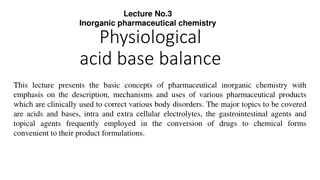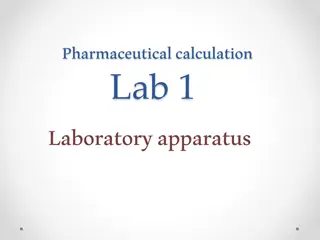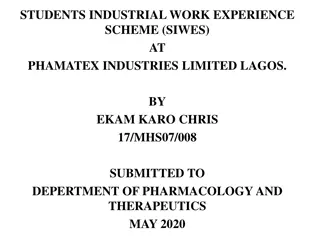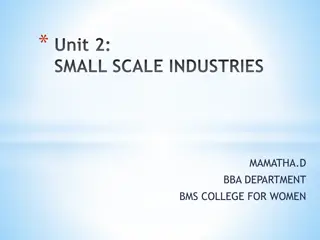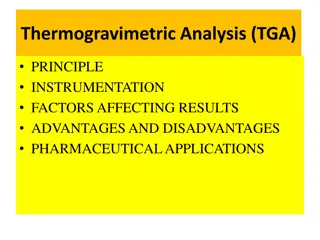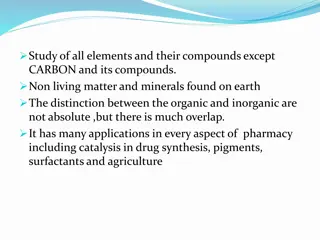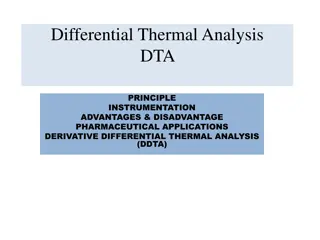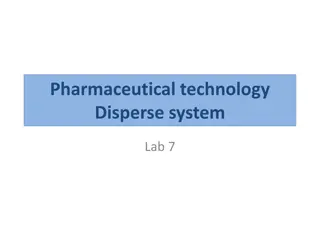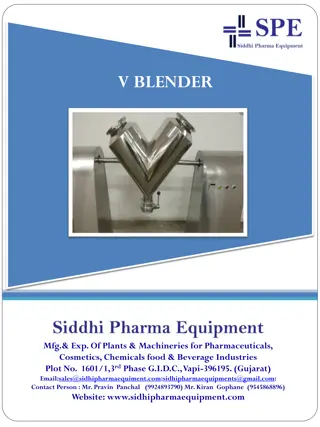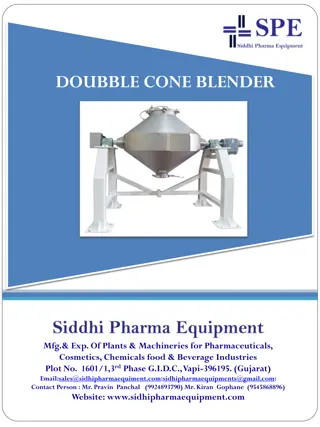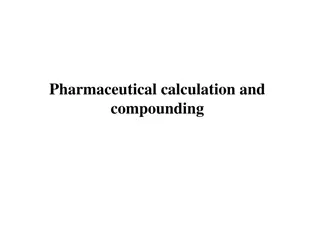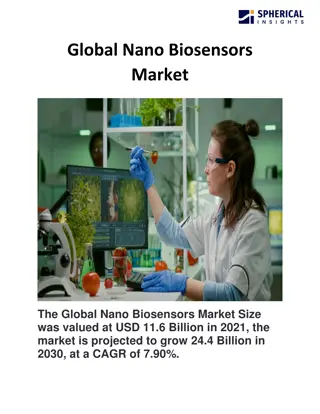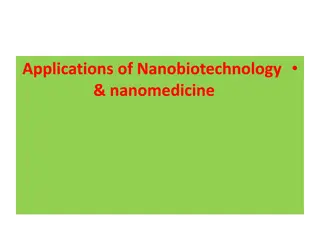
Applications and Working of Biosensors in Pharmaceutical Industries
"Learn about the uses and composition of biosensors in pharmaceutical industry, including detecting microorganisms, diseases, chemicals, and proteins. Explore how biosensors work through enzymes and transducers."
Download Presentation

Please find below an Image/Link to download the presentation.
The content on the website is provided AS IS for your information and personal use only. It may not be sold, licensed, or shared on other websites without obtaining consent from the author. If you encounter any issues during the download, it is possible that the publisher has removed the file from their server.
You are allowed to download the files provided on this website for personal or commercial use, subject to the condition that they are used lawfully. All files are the property of their respective owners.
The content on the website is provided AS IS for your information and personal use only. It may not be sold, licensed, or shared on other websites without obtaining consent from the author.
E N D
Presentation Transcript
Working and applications of biosensors in Pharmaceutical Industries By Swarnakshi Upadhyay Assistant professor School of Pharmaceutical Sciences CSJM University
BIOSENSOR A biosensor is a device, probe or electrode consisting of an immobilized biocatalyst (enzymes or cells). OR A biosensor is an analytical device which is used to determine the presence and concentration of a specific substance in a biological analyte.
Uses of the biosensor device To detect microorganisms in water, food, etc and also for diagnostic purposes. Finding microorganisms in a blood sample or any biological sample to detect the disease or disorder. Used for detecting chemicals like antibiotics in a particular sample. Can be used to detect toxic chemicals in nutraceuticals or food supplements, packed food, etc. Can be used for detecting proteins (biomarkers). These proteins are present in the blood sample of a diseased person (e.g. Cancer patient) and hence disease can be diagnosed or detected. Early diagnosis of various diseases.
Composition of biosensor Biosensor consists of immobilized enzymes or cells which are used in detection system. Bioreceptor: Different enzymes can be immobilized for different purposes like detection of various substances. The substances which can be detected are as follows: Antibody, Nucleic acids Cells (microbial, plant, animal, human) MIP: macrophage inflammatory protein (protein)
Composition of biosensor Transducer: A transducer converts the interaction between the analyte (substance to be detected) and the immobilized enzymes and cells into a measurable signal. The signal can be physical, chemical or electrical signal. Numbers of transducers are used which are listed as follows: Optical : absorption, fluorescence, interference Electrochemical : potentiometric, amperometric, conductimetric Mass based Temperature based Electric and magnet : dielectric and permeating properties, voltage or current. Display unit: The signal is displayed onto the display unit of the biosensor.
Working of a biosensor Enzymes are a protein molecule which acts as a catalyst in several chemical reactions and are used as bioreceptors. The enzyme which is used in the biosensor reacts with the analyte or substances which is to be determined. The product formed is detected using a transducer and the signals which are produced are processed and converted into different measurable forms.
Examples of biosensors There are several known biosensors, some of the examples are as follows For analyzing the quantity of alcohol, an enzyme alcohol oxidase is immobilized using glutaraldehyde where the transducer is oxygen. For determining glutamate concentration, glutamate decarboxylase is immobilized using glutaraldehyde having CO2 as the transducer. Urea uses polyacrylamide for immobilization of urease enzyme. Examples for glucose and penicillin are well discussed ahead.
Glucose biosensor Target molecule is glucose. For detection of glucose, glucose oxidase enzyme is used as bioreceptor. This enzyme is immobilized on a membrane. There is interaction between glucose and glucose oxidase enzyme which leads to formation gluconic acid. Transducer i.e. a signaling system is of electrochemical type, it detects the formation of gluconic acid based on its concentration. It converts formation of gluconic acid into electrochemical signal. Display unit, the electrochemical signal is measured by amperometer and the current is detected and converted into digital units.
Penicillinase biosensor It is used for detection of -lactam antibiotics in a particular sample. Also used for determining/ detection of concentration of antibiotic.


